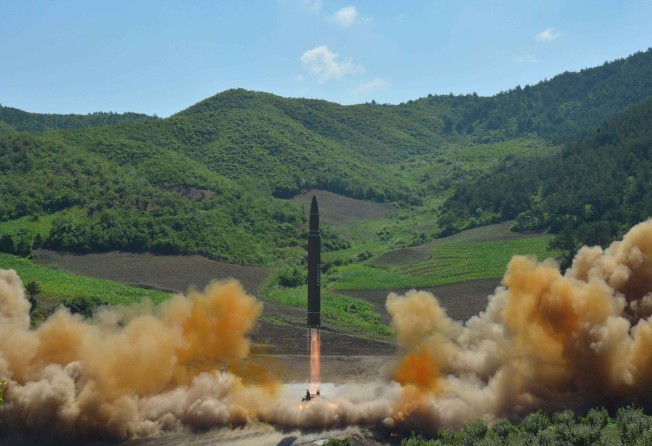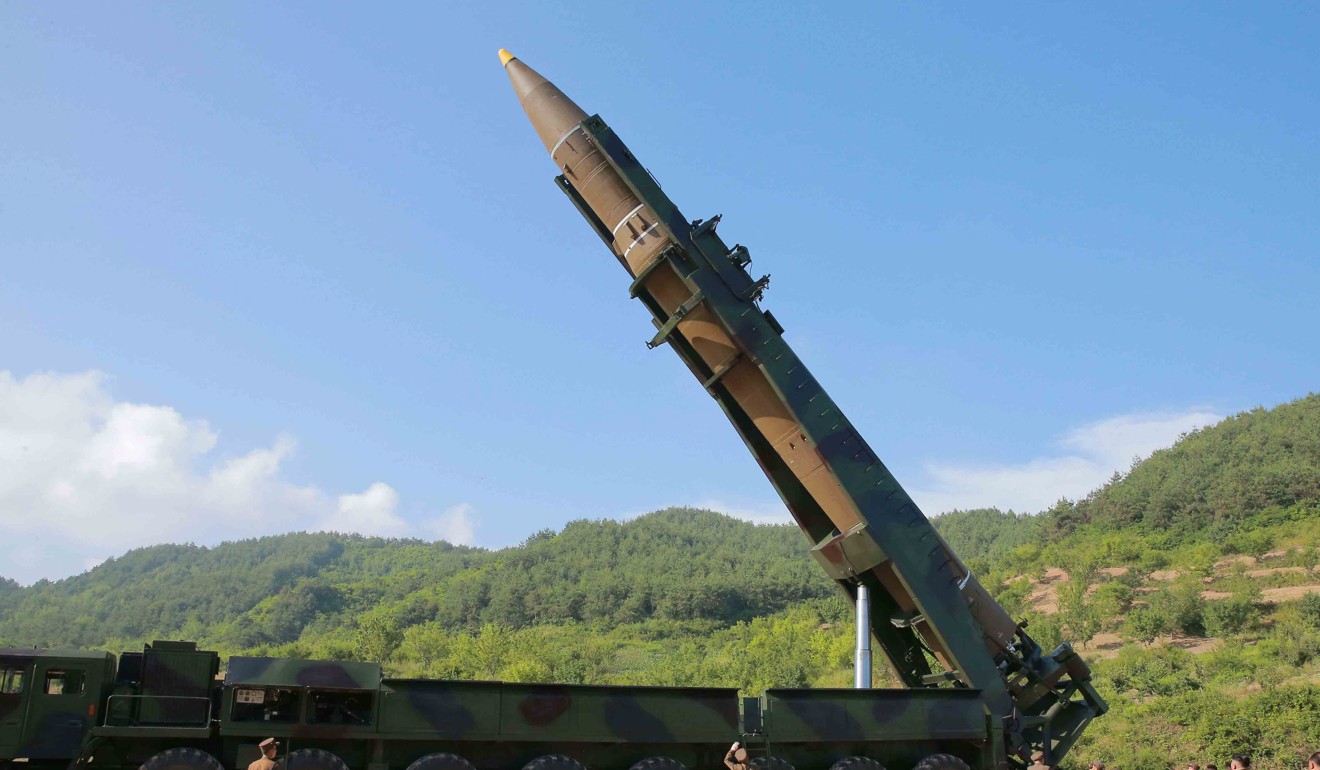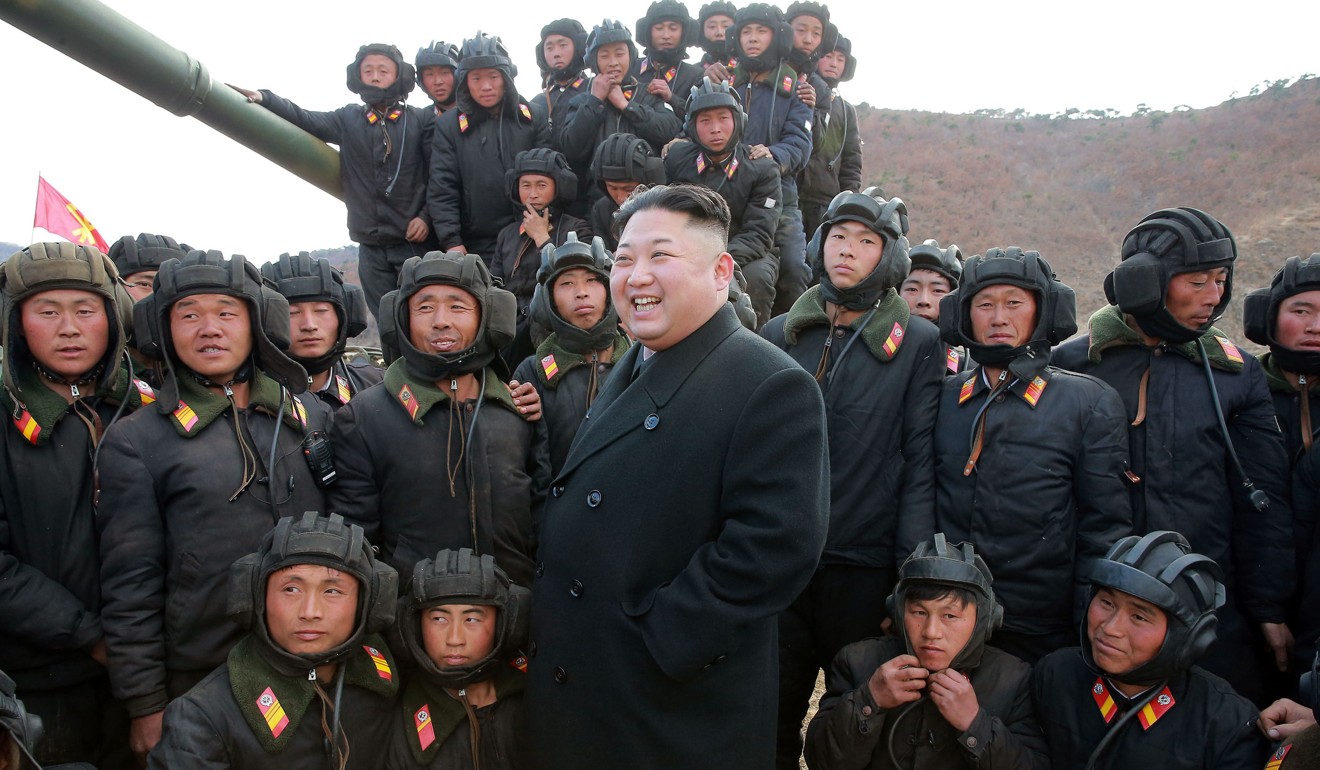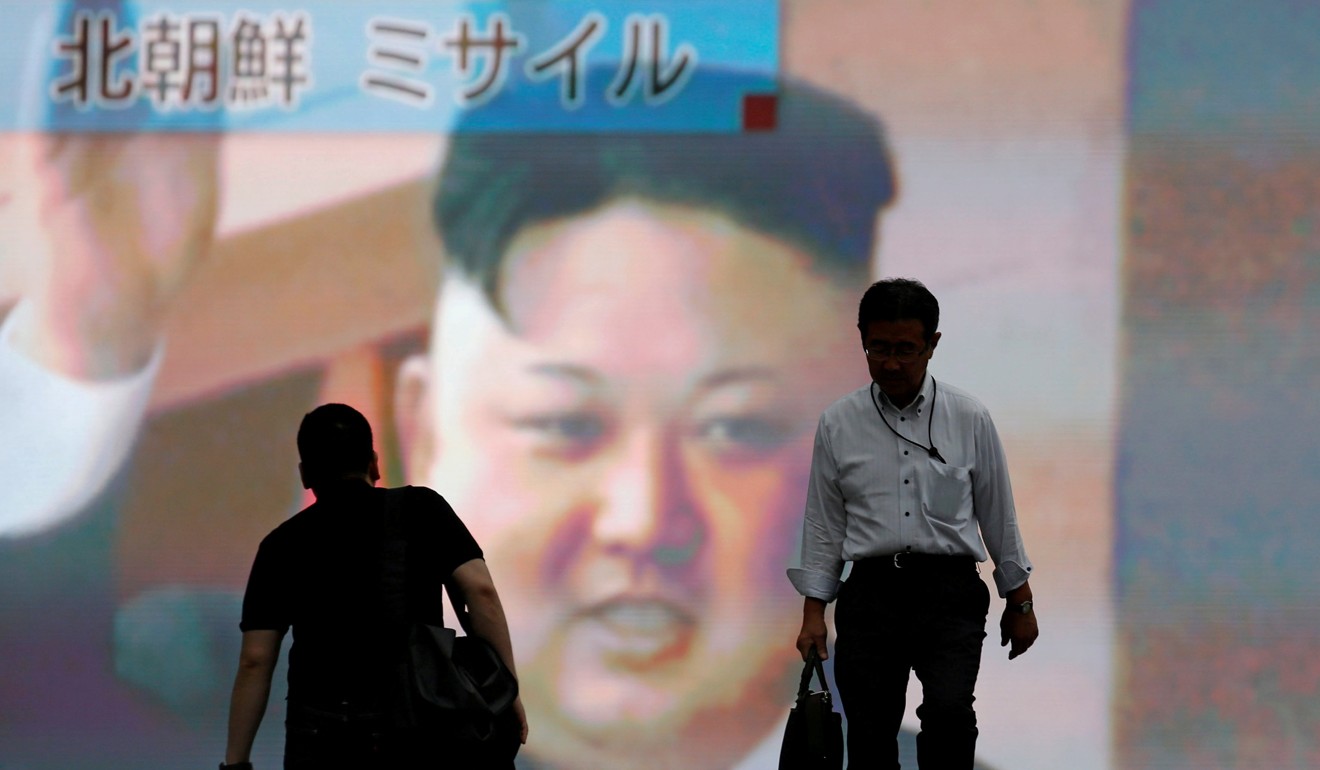North Korea test-launches second ICBM, Trump condemns action as ‘reckless and dangerous’
China, the North’s main ally, said it opposed North Korea’s “launch activities that run counter to Security Council resolutions and the common wishes of the international community”

US President Donald Trump on Friday condemned as “reckless and dangerous” North Korea’s second test-launch of an intercontinental ballistic missile that some experts said could reach major cities in the mainland United States.
Trump said the United States will take “all necessary steps to ensure the security of the American homeland and protect our allies” in Asia.
China, the North’s main ally, said it opposed North Korea’s “launch activities that run counter to Security Council resolutions and the common wishes of the international community”.
A foreign ministry statement added: “At the same time, China hopes all parties act with caution, to prevent tensions from continuing to escalate, to jointly protect regional peace and stability.”
North Korea fired the ballistic missile on Friday in a late-night test launch from its northern Jangang province that landed in the sea off its east coast, possibly in Japan’s exclusive economic zone, South Korea and Japan said.
North Korea said leader Kim Jong-un observed the test and said that the launch demonstrated an ability to conduct a surprise attack on the US mainland.
The launch took place at 11.41pm HKT on Friday, an official at South Korea’s Office of the Joint Chiefs of Staff said. The US Defence Department also confirmed the launch as a ballistic missile, saying it was making further assessments.
South Korean President Moon Jae-in called a National Security Council meeting for early on Saturday, his office said, and Japanese Prime Minister Shinzo Abe also said a National Security Council meeting would be convened.
Japanese Chief Cabinet Secretary Yoshihide Suga said that the North Korean missile flew for about 45 minutes.
On July 4, North Korea test-launched its first intercontinental ballistic missile.
Japanese public broadcaster NHK said the coast guard issued safety warnings to aircraft and ships.
Analysts say the “Hwasong 14” ICBM launched by North Korea on July 4 could be capable of reaching most of Alaska or possibly Hawaii if fired in an attacking trajectory. It was launched at a very steep angle, a technique called lofting, and reached a height of more than 2,500km before splashing down in the Pacific Ocean 930km away.
This latest provocation compounds the problem facing the Trump administration and North Korea’s neighbours: how to stop the Kim regime from making progress with its nuclear weapons programme.
On Wednesday, the day before the anniversary of the end of the 1950-1953 Korean War, North Korea threatened to launch a pre-emptive nuclear strike against the United States.
“If enemies misunderstand our strategic status and stick to options of staging a pre-emptive nuclear attack against us, we will launch a nuclear attack on America’s heart as the most relentless punishment without warning or prior notice,” Pak Yong Sik, North Korea’s defence minister, said at a ceremony on Wednesday, according to the North’s official Korean Central News Agency.

“We’re at a point where with each test North Korea advances its nuclear and missile capacity and strengthens its negotiating position,” said Suzanne DiMaggio, director and senior fellow at New America Foundation, a Washington-based think tank.
In an exclusive interview with the South China Morning Post in early July, DiMaggio said Pyongyang’s latest successful ICBM test has given it confidence in its negotiating power and it is seriously considering a return to talks. DiMaggio helped organise informal talks between Washington and Pyongyang. She met senior North Korean nuclear negotiators in Oslo, Norway in early May.
Harry Kazianis, director of defence studies at the Centre for the National Interest, called for more sanctions against Pyongyang.”The time for Washington and its allies to press North Korea with tighter sanctions – targeting those directly and indirectly helping Pyongyang build its deadly weapons, and yes, that means China – is now.”
“The Trump administration must also step up its cyber efforts to slow down the Kim regime’s ability to make progress on its nuclear and missile programmes. We must also boost dramatically our missile defence efforts in Asia and for the homeland,” said Kazianis.
A Pentagon spokesman says the US believes the missile launched by North Korea was an intercontinental ballistic missile, the Associated Press reported.The spokesman, Jeff Davis, said on Friday the missile did not pose a threat to North America.
Cui Tiankai, China’s ambassador to Washington, said on Tuesday that China and the US share the common goal of denuclearising the Korean Peninsula. “There is ongoing consultation between China and the US on the issue and we hope that all parties concerned will join the diplomatic efforts and work towards the same direction,” Cui said at an event organised by the Institute for China-America Studies, a Chinese think tank in Washington.

Jeffrey Lewis, head of the East Asia programme at the Centre for Non-proliferation Studies, said the latest apparent ICBM test would have been designed to demonstrate that North Korea could hit more of the mainland US.
“My guess is that they want to show more range,” Lewis said, adding that North Korea was essentially calling the Pentagon’s bluff. “We basically dared them to do this. We said, ‘It’s not really an ICBM until it can hit Alaska,’ and they’re like ‘okay.’”
The Kim regime has been testing missiles and making observable technical progress at a pace that has alarmed analysts and officials alike.
The Pentagon’s Defence Intelligence Agency (DIA) has shaved two full years off the consensus forecast for North Korea’s ICBM programme, now estimating that North Korea will be able to field a reliable, nuclear-capable intercontinental ballistic missile as early as next year.
The aggressive testing schedule has already allowed North Korea to validate its basic designs, putting it within a few months of starting industrial production, the officials said.
The July 4 test, which violates United Nations resolutions against North Korea, was met with the usual rounds of international condemnation but the world has not found a way to convince North Korea to stop.
The US has been leading the charge for more and more sanctions against North Korea, but Russia and China, both veto-wielding permanent members of the UN Security Council, have been reluctant to impose painful measures and are instead calling for a “de-escalation plan” to deal with Pyongyang.
The US won’t know anything about North Korea’s intentions unless it engages the regime seriously and at length, said Sharon Squassoni, head of the proliferation prevention programme at the Centre for Strategic and International Studies, the Washington-based think-tank.
“Kim Jong-un does seem hell-bent on acquiring the capability to reach the United States with nuclear weapons,” she said. “Although some experts judge this means he will never negotiate, it could also mean that he’s looking for the capability that forces the United States to the table.”

The Trump administration needs to commit resources and real expertise to reshaping peace and security on the Korean peninsula, she said.
Kelsey Davenport, director for non-proliferation policy at the Arms Control Association, agreed that sanctions alone will not change North Korea’s behaviour.
“A deployed North Korean ICBM is not inevitable, but it will be if policymakers in Washington keep putting the cart before the horse and demanding Pyongyang meet onerous preconditions to begin talks,” she said.
The Trump administration, like the Obama administration before it, has said that North Korea must agree to freeze its weapons programme before talks can begin.
“Washington’s diplomacy deficit is further compounded by the dangerous illusion that sanctions alone will push North Korea to negotiate,” Davenport said, “when the Trump administration and Congress should be focused on signalling support for talks without conditions.”
Additional reporting by Zhenhua Lu